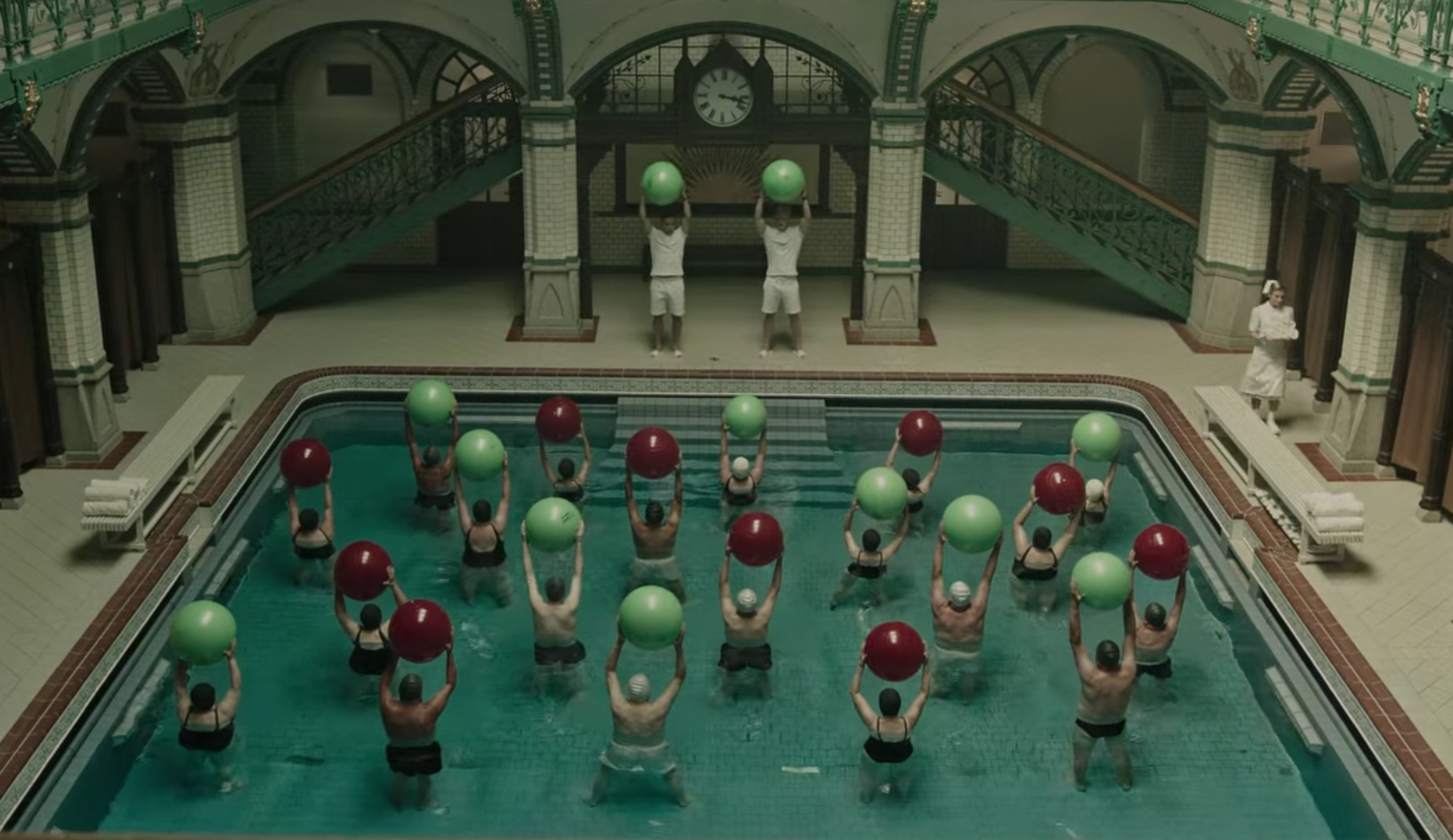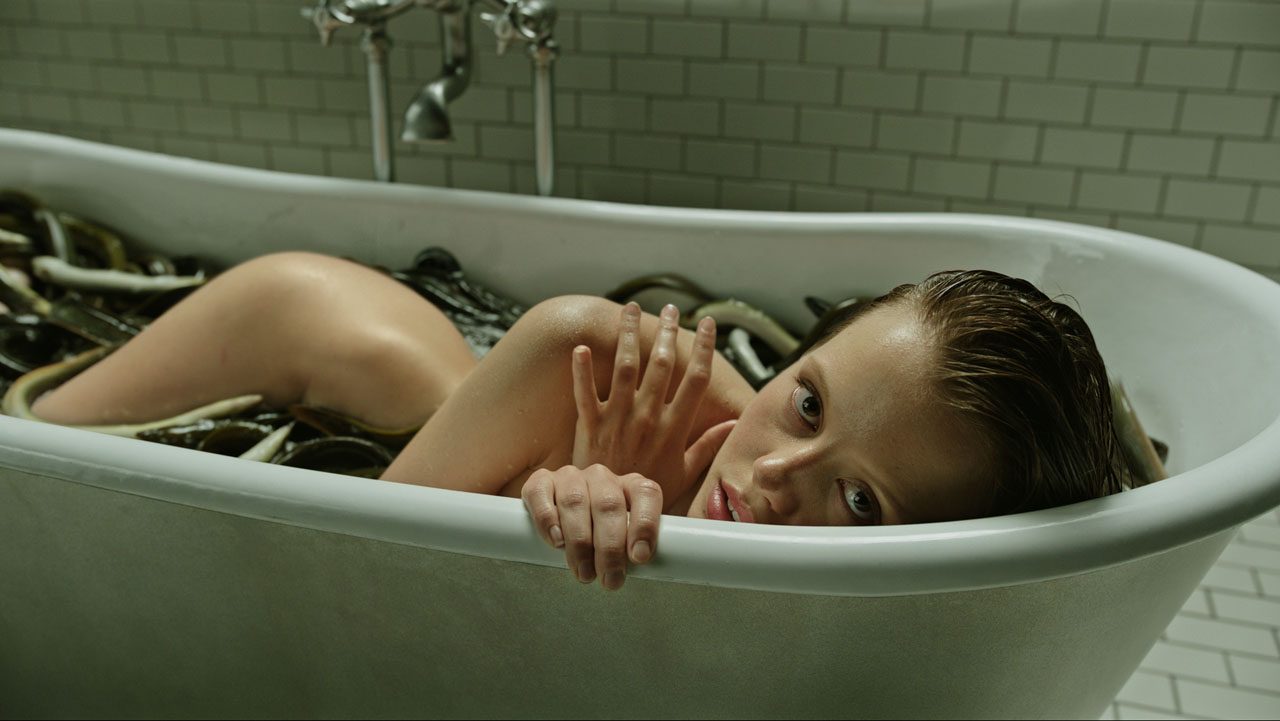

In 2017, A Cure for Wellness is something of a miracle. It is a dark odyssey that twists and turns, slowly evolves from an intriguingly odd thriller to an outright gothic horror tale. It’s a deeply flawed film, but it’s also one of the most exciting ones to come out of Hollywood in a while. It’s the kind of big swing film that doesn’t seem to get made much anymore. And that’s a shame, because A Cure for Wellness hits more than it misses, and is a testament to what visionary directors can create when given the chance to do so.
The film starts simply enough. Dane DeHaan, Chronicle, a young actor singularly adept and simultaneously welding an audience’s contempt and compassion, plays Lockhart, an ambitious and morally unencumbered man who finds himself promoted to the corner office after the previous occupant suffers a sudden heart attack. As the newest and youngest executive of a dubious financial firm, Lockhart is tasked with retrieving their CEO from a remote wellness center in the Swiss Alps, but when he arrives, the executive is not interested in leaving. In fact, according to one of the village locals, no one ever leaves.
It’s an intriguing, if familiar premise, but director Gore Verbinski (Pirates of the Caribbean) distinguishes A Cure for Wellness immediately in other ways. First is the film’s protagonist – Lockhart. While he’s undoubtedly one of the most interesting young actors working today, DeHaan isn’t a typical leading man, just as Lockhart isn’t a typical protagonist. He’s not overly likeable, his ambitions aren’t overly likeable, and he seems both psychologically and physically unwell. Second, and perhaps most strikingly, is Bojan Bazelli’s cinematography. Simultaneously timeless and cutting edge, the photography is always stunningly beautiful, even when things take a turn for the horrific.
And things do take a turn for the worse, but not exactly the way you’d expect. After car accident, Lockhart finds himself a guest of the hospital’s director, Doctor Volmer (Jason Isaacs, the Harry Potter series). Not entirely sure whether he’s a guest or a prisoner, Lockhart begins investigating the center’s treatments, all which center around water from an aquifer beneath the castlesque facility. Here, the film transitions into something of a paranoid psychological thriller. Lockhart’s investigation uncovers unorthodox procedures, a sordid history surrounding an incestuous baron, and a girl – Hannah (Mia Goth, Nymphomaniac), a mysterious patient, younger than everyone else at the facility by about 40 years.
The film’s final act blossoms into a true gothic horrorscape. Some viewers might be disappointed by the lack of any final twist, but there’s something satisfying about witnessing the inevitability of story play itself out to its gory conclusion. Despite its slick and modern marketing campaign, A Cure for Wellness is an old-fashioned horror film in the style of the Universal and Hammer horror films, and all that that implies.
Gore Verbinski’s new film was never going to be a universally appealing film, and I think that is a good thing. It is, in many ways, a flawed film – at two and a half hours, it’s ponderous and overlong, and it never quite hones its tone to a razor’s edge. But it’s also bold and stylish and compelling and a lot of fun to watch. It’s rare these days to see more than a few million dollars spent on a horror film, especially one that’s not part of a franchise. A Cure for Wellness is the kind of film that doesn’t get made much anymore, and that makes it worth paying attention to. It might not be the masterpiece we want, but it’s a genuinely engaging and beautiful piece of original filmmaking.
Verdict: 4 out of 5
Director Gore Verbinski and screenwriter Justin Haythe’s last film was The Lone Ranger, a film that was, in many ways, a showcase of all of Hollywood’s worst impulses. As if in response to that, Verbinski has returned to his horror roots with gusto. A Cure for Wellness doesn’t quite hold up to the horror epics of old, but it is a stunning work of gothic horror that genre fans will want to see on the big screen. Verbinski continues to be one of the most cunning visual storytellers working today and its captivating to see him take big swings like this. If more filmmakers swung for the fences, our theatres would be more interesting places.


